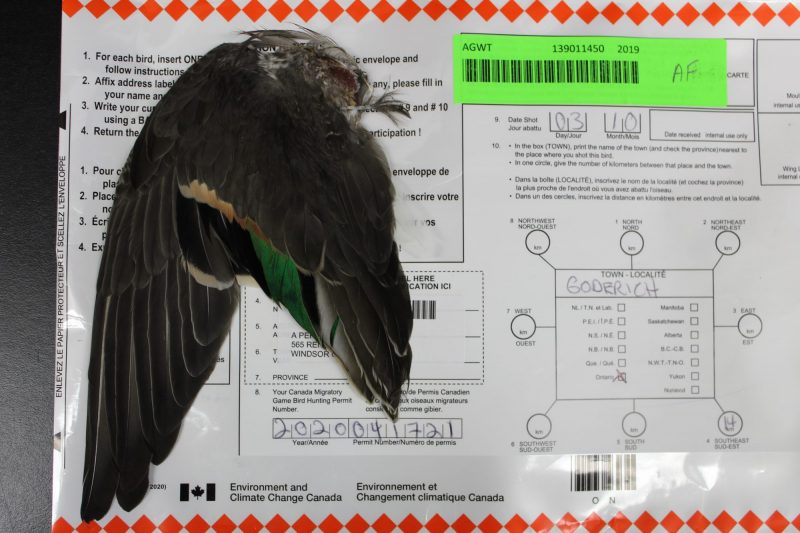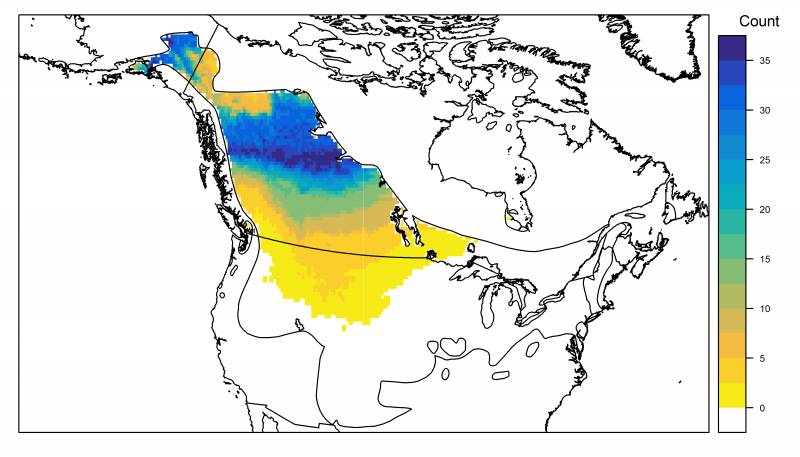Here the Department of Biology from the University of Western Ontario explore how the stable isotope approach and annual monitoring can help in advancing government wildlife management schemes
Local and federal governments around the world are tasked with conserving game species or those that are legally harvested. Managing stocks of resident populations of animals can be achieved through habitat conservation or manipulation and the careful regulation of numbers, age class and sex of those taken for consumption.
This approach is designed to ensure a stable population of animals indefinitely and clearly requires knowledge of factors contributing to population regulation in any given region. This approach works well when considering a closed population that is well-defined spatially. However, the management of migratory species, especially those that cross international borders and which are essentially unmarked and of unknown origin, presents tremendous challenges. In particular, knowledge of key areas that produce young-of-the-year that are recruited into harvested populations is key to setting harvest regulations.
Previously, I introduced the principle of using intrinsic markers of origin for unmarked migratory individual animals using measurements of the abundance of naturally occurring stable isotopes of various elements in their tissues (https://www.openaccessgovernment.org/article/tracking-animal-migration-stable-isotopes/155074/). That forensic tool was especially powerful when based on assignment to precipitation-based (δ2H) isoscapes and we have already witnessed a massive increase in the use of this tool in ecological and forensic research.
Using isotopic tools to enhance the management of hunted migratory populations
Here, I present the idea of using isotopic tools to enhance the management of hunted migratory populations. I provide the example of the well-regulated harvest of waterfowl in North America but recognize that several isotopic studies have also examined related questions for game species in Europe (Wood Pigeon, Columba palumbus; Eurasian Woodcock, Scolopax rusticola; Mallard, Anas platyrhynchos; see also Ortolan’s Bunting, Emberiza hortulana).

The North American Model
Each year, millions of waterfowl migrate between Canada, the USA and Mexico and the North American Waterfowl Management Plan (NAWMP) involving these three countries is a rare example of a successful international agreement to conserve species and their habitats through joint ventures and other initiatives. Current waterfowl population management in North America uses multiple approaches to monitor changes in annual breeding abundance, harvest and survival rates, and population size. Particularly impressive is the Waterfowl Breeding Population and Habitat Survey (WBPHS) conducted annually in May and June by the U.S. Fish and Wildlife Service and the Canadian Wildlife Service. The survey is conducted by ground, airplane, and helicopter over a 2 million square mile area that covers the principle breeding areas of waterfowl in North America. Used collectively, these data can be integrated into population models that ultimately inform harvest management regulations. However, these monitoring programs are often not implemented throughout the geographic extent of breeding waterfowl habitat, especially in remote boreal regions, and thus limit the ability to make inference beyond the region of survey.
In addition to not comprehensively covering the extent of species’ breeding range by WBPHS, associated ringing data requires a capture-mark-recapture framework that is restricted to few species and most often implemented in areas most easily accessed. So, while these approaches are foundational to current monitoring and management, little work has been conducted to resolve the lack of quantitative monitoring of waterfowl productivity in inaccessible or un-surveyed regions.
Stable isotope ecology can greatly assist with this data gap and a growing number of research publications have demonstrated applications to quantify the source origins of unmarked harvested waterfowl. Inferences from these data have broad applications to future waterfowl management but formal ways to integrate these data into long-term monitoring and population analyses have not yet occurred.

The U.S. and Canadian Parts Collection Survey
Each year, in Canada and the USA, wings from hunter-killed birds provided by a cross section of hunters is provided for the purpose of providing estimates of the total number of waterfowl harvested by species, age (young of the year, adults) and sex (Figure 1). These data combined with the WBPHS and ring returns, are used to set species-specific harvest regulations based on expected adult female recruitment into the breeding population. This parts collection is thus a veritable gold mine of feather material that can be used for stable isotope analysis to assign individuals to approximate breeding or moult origin based on already proven analytical techniques.
To date, we have used the annual “wing bee” as a source of material for isotope analysis of feathers but the time is now ripe for a formal integration of this parts survey with a stable isotope assay of origins of hunter-killed birds regionally. This approach would allow the critical identification of those areas that actually produce the birds being harvested and so establish migratory connectivity information essential to conservation planning. Moreover, once basic patterns are established, further analyses need not be conducted annually but could be monitored every 5 years or so as a means of monitoring source population origins as habitats change through time.
Some examples of successful stable isotope approaches
Fundamental to the success of the stable isotope approach to assign waterfowl to origin is the establishment of a calibration algorithm linking precipitation isotope patterns to expected patterns in feather stable isotope values. Our lab has recently advanced this approach using known-origin waterfowl in North America and Europe and includes both dabbling and diving species (Kusack et al., in review). We have also recently evaluated origins of hunter-killed American Black Ducks (Anas rubripes) in Atlantic Canada and confirmed that birds taken in the USA are overwhelmingly produced in boreal eastern Canada. Other studies have focussed on origins of harvested Blue-winged Teal (Anas discors, Figure 2) Sandhill Cranes (Grus canadensis) and Northern Pintails (Anas acuta). We have worked closely with waterfowl biologist Michael Schummer and students at the State University of New York to conduct similar investigations on mallards and scaup (Aythya spp).
Our current focus is now on the origin of Mourning Doves (Zenaida macroura) harvested primarily in the USA. In short, the groundwork has been laid and we propose a coordinated federal government international approach to formally integrating stable isotope analyses into gamebird harvest management strategies.













